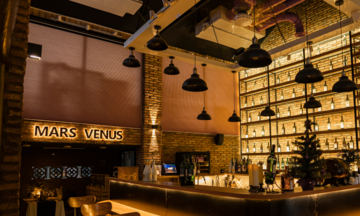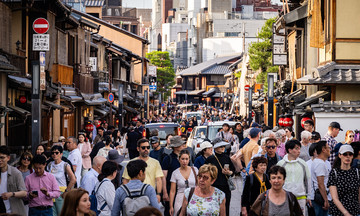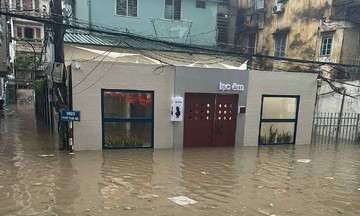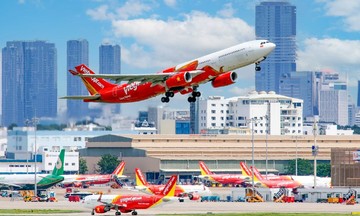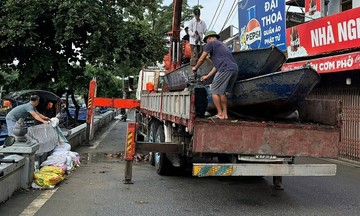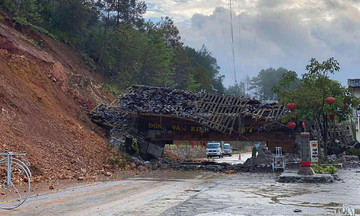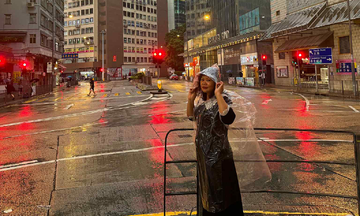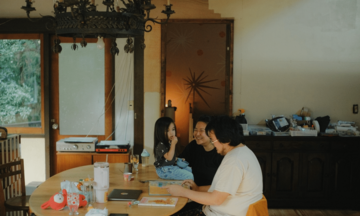In Mu Cang Chai (Lao Cai), one of Vietnam's most famous rice-viewing destinations, accommodations are operating at near full capacity. According to data from Mustgo, a booking platform with over 2,000 hotel partners, room occupancy in September has reached 85%, with Saturdays and Sundays almost completely booked.
This year's rice crop has ripened unevenly due to variations in planting times. Currently, a single hillside can display shades of green, yellow, and already-harvested patches. "This extends the tourism season, allowing visitors to enjoy the scenery from now until the end of October," a Mustgo representative said.
Similarly, in Hoang Su Phi (Tuyen Quang), where the terraced rice fields are recognized as a National Heritage Site, average room occupancy for September and October has also reached 85%.
Trieu Choi, manager of Binh Minh Homestay in Nam Hong village, said all 11 bungalows overlooking the rice terraces are fully booked for every weekend in September. Guests have to book a month in advance to secure the best rooms, and bookings for October are also increasing rapidly. "Most guests are groups of young friends or families, prioritizing places with views of the rice paddies directly from their windows," Choi shared.
The high demand extends to accommodations further from the town center. Hoang Su Phi Green Hotel, located 9 km from the nearest rice-viewing spot in Hoang Su Phi, reported full bookings on weekends due to large group reservations, while weekdays see mostly individual travelers.
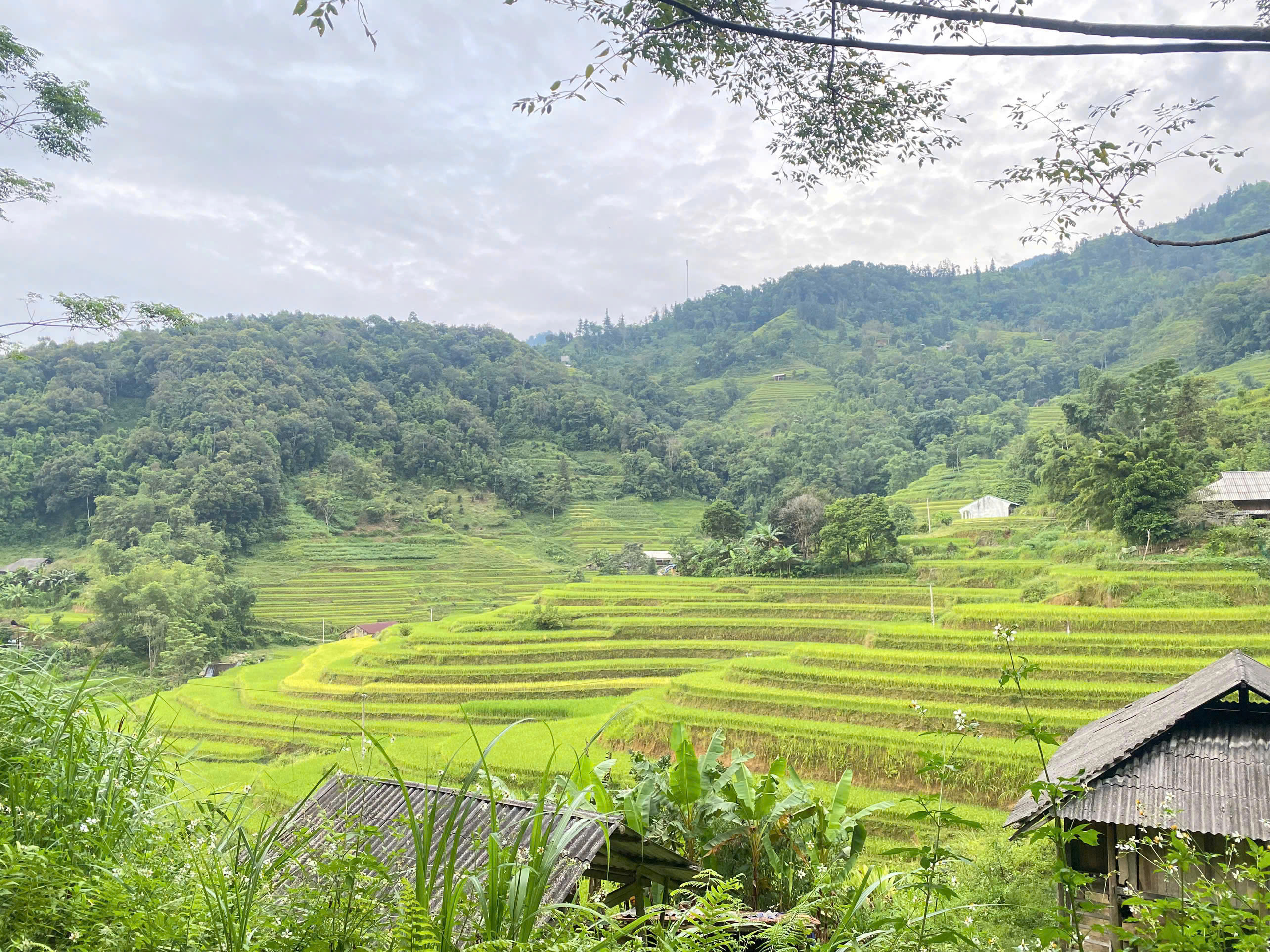 |
Terraced rice fields in Hoang Su Phi. Photo: Panhou Retreat
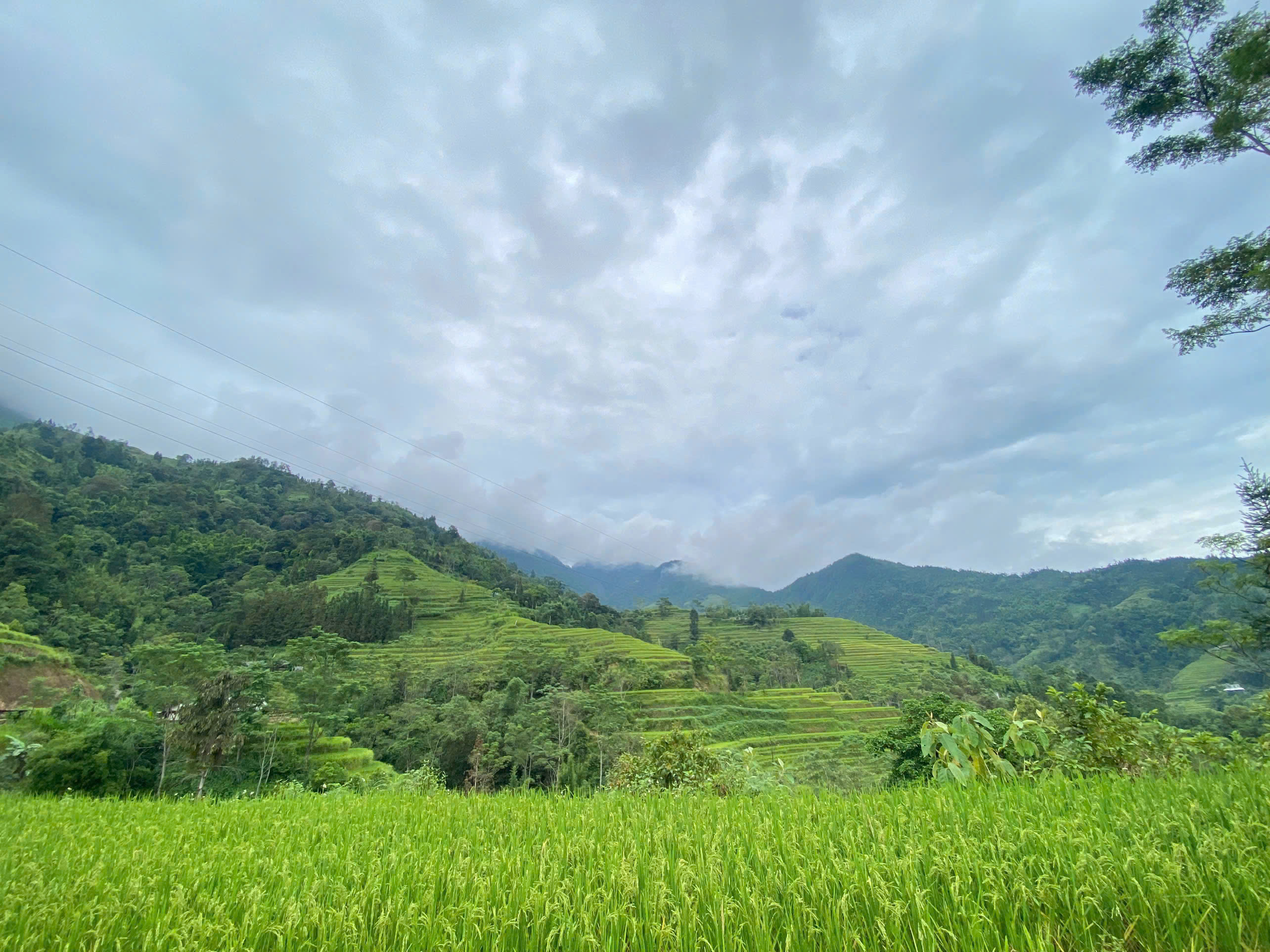 |
The rice fields are expected to be fully golden by the end of September.
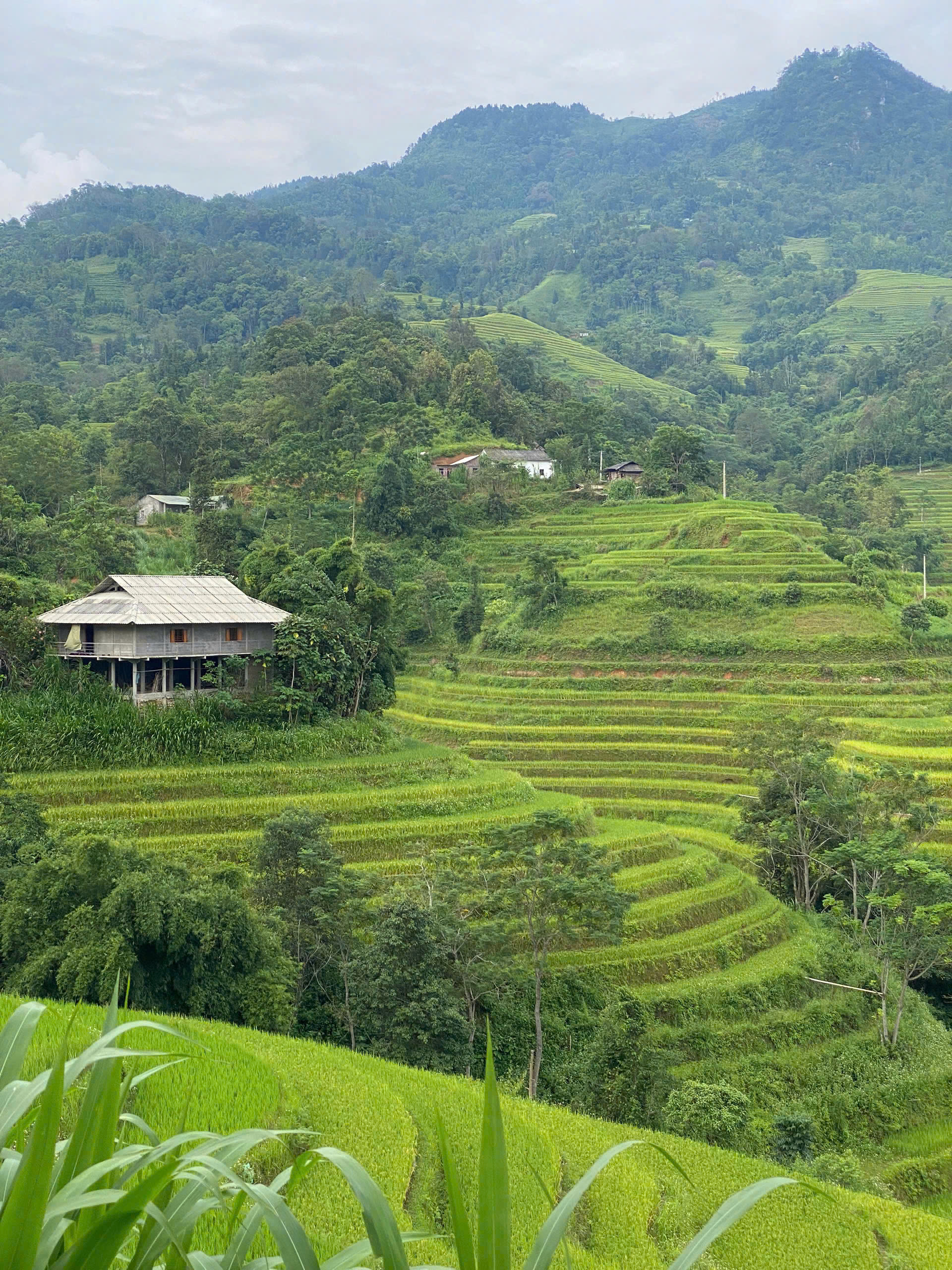 |
Some fields in Nam Dich are still green.
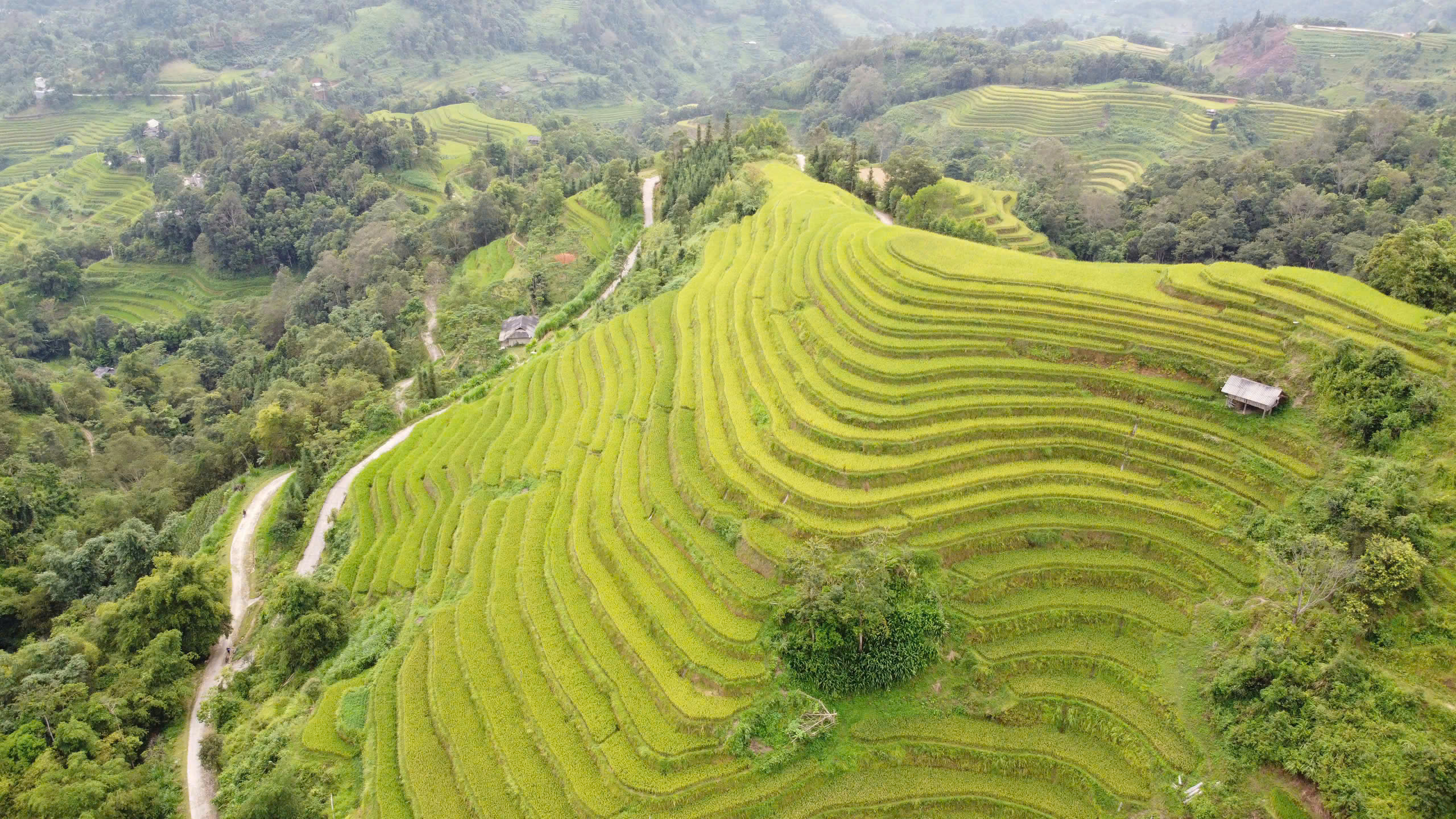 |
Golden terraced fields are expected to be harvested in the next one or two weeks.
The surge in tourism isn't limited to these two locations. In Pu Luong (Thanh Hoa), which has two rice seasons per year, average room occupancy is around 70%, with weekends nearly full. Finding suitable accommodation on weekends in Ta Xua (Son La), where visitors can enjoy both cloud hunting and rice paddy views, is also a challenge.
Thuy Hanh, a tourist from Hanoi, had to plan her trip to Ta Xua in August and take leave to travel on a weekday. "The best homestay I was aiming for was completely booked for weekends in September. Even though the rice is just starting to turn golden, there are already many tourists, and the atmosphere is lively everywhere," Hanh said.
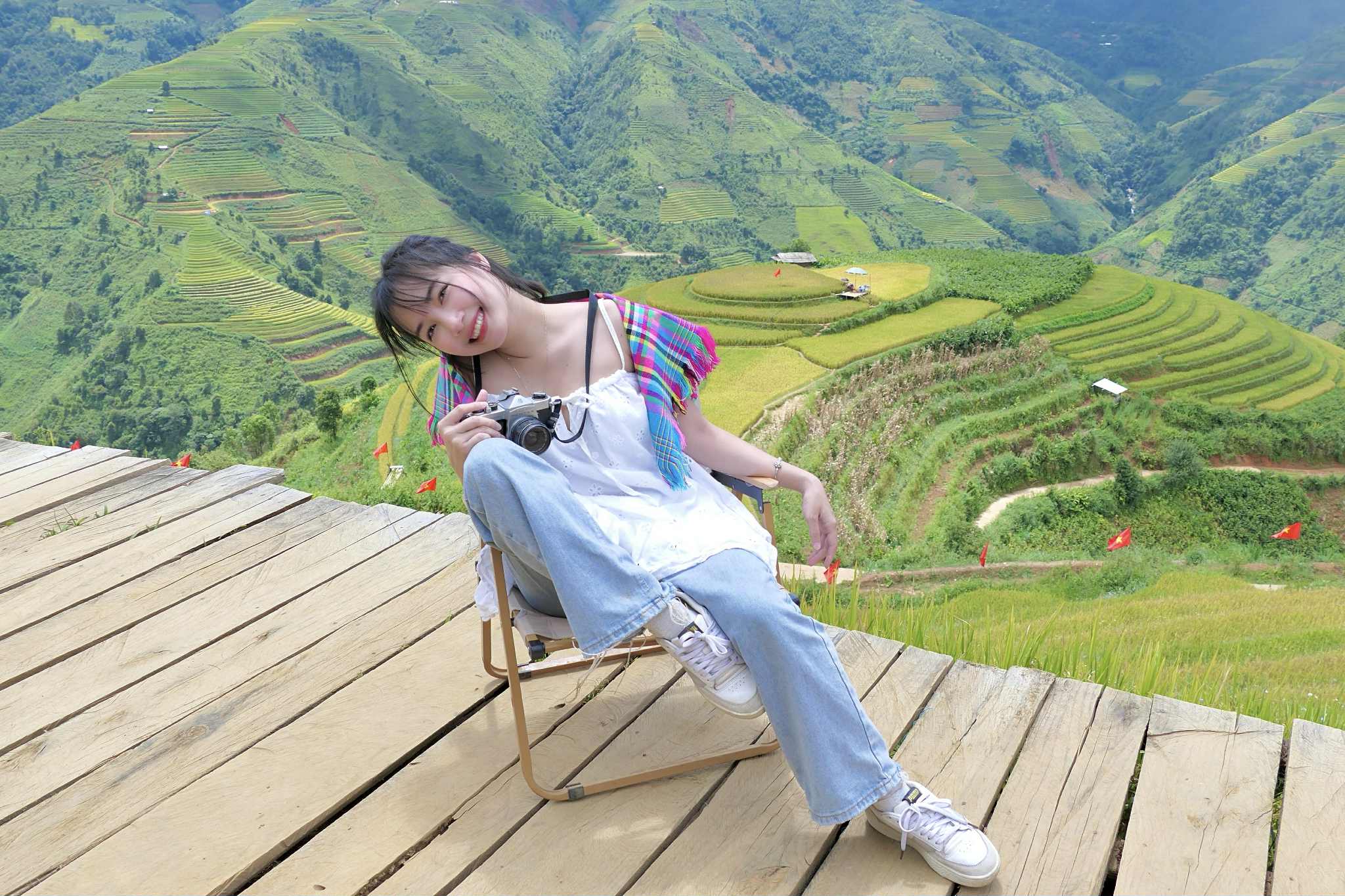 |
Hanh at a homestay in Ta Xua. Photo: NVCC
The ripe rice season is currently a key tourism product for travel companies during the autumn and winter. Pham Anh Vu, deputy general director of Viet Travel, said tours to Mu Cang Chai, Hoang Su Phi, Sa Pa, and Y Ty account for 60% of total domestic tours sold in September and October.
"The customer base is very diverse," a representative from Best Price travel agency analyzed. This includes families with young children seeking nature experiences, groups of young photography enthusiasts, and middle-aged groups looking for cultural and culinary experiences. The agency noted a sharp increase in golden rice season tour bookings in the second and third weeks of September, with high booking pressure on weekends.
While international tourists don't yet make up a large percentage of mainstream tours, the appeal of the Northwest golden rice season on the global tourism map is undeniable. Alex Sheal, a representative of Vietnam In Focus, a company specializing in photography tours for foreigners, said demand for this type of tour is high.
"We've been organizing harvest photo tours in Northwest Vietnam since 2014, but it wasn't until around 2018 that it really boomed with international tourists. They consider it one of the most attractive times to visit Vietnam," Sheal said.
According to Sheal, international tourists, especially photographers, don't just come for the landscapes. "They want to capture the vibrant moments of ethnic minorities working in the fields, the smiles of children, and the highland markets. It's the beauty of the intersection between nature and people."
Currently, Alex Sheal's company has received booking requests for golden rice season tours from three groups for 2026.
Overcrowding at familiar destinations presents challenges regarding environmental protection and service quality, while also creating opportunities for new areas.
"Some places like Mu Cang Chai and Hoang Su Phi are sometimes too crowded. To ensure a unique experience for our customers, we have to constantly adjust our itineraries," Alex Sheal shared. This year, his company is focusing on a new, pristine, and lesser-known destination in Lai Chau province.
This is also a general trend among experienced travelers. Instead of crowding popular spots, they seek out lesser-known villages like Ban Phung and Ban Luoc (Hoang Su Phi commune, Tuyen Quang province) or explore new routes for more authentic experiences and tranquility.
The Northwest golden rice season is no longer just a tourism product; it has become a brand, an annual event. This vibrancy brings significant income to locals while requiring both management authorities and tourists to be responsible for preserving the landscape and developing sustainable tourism.
Tu Nguyen



